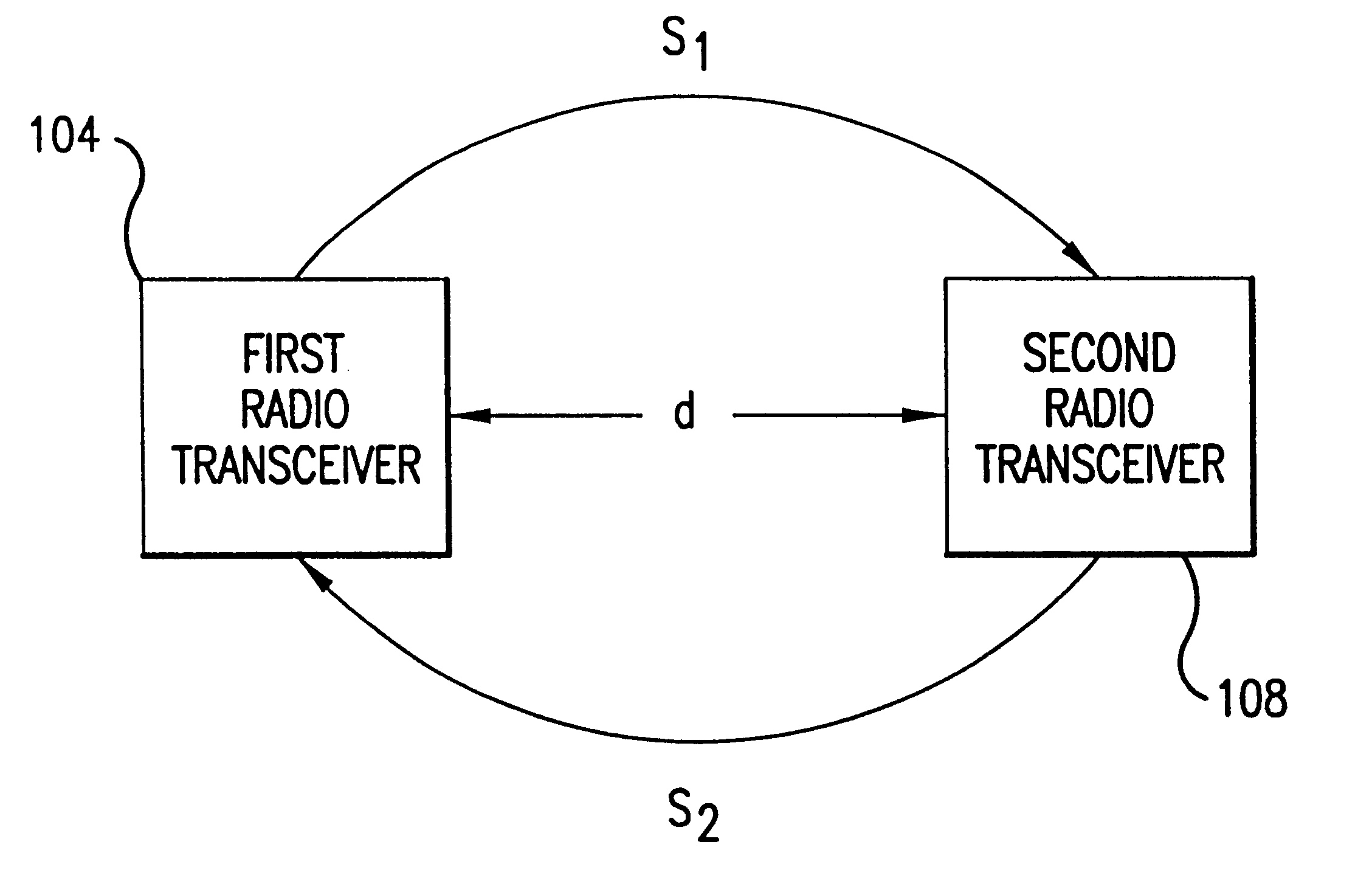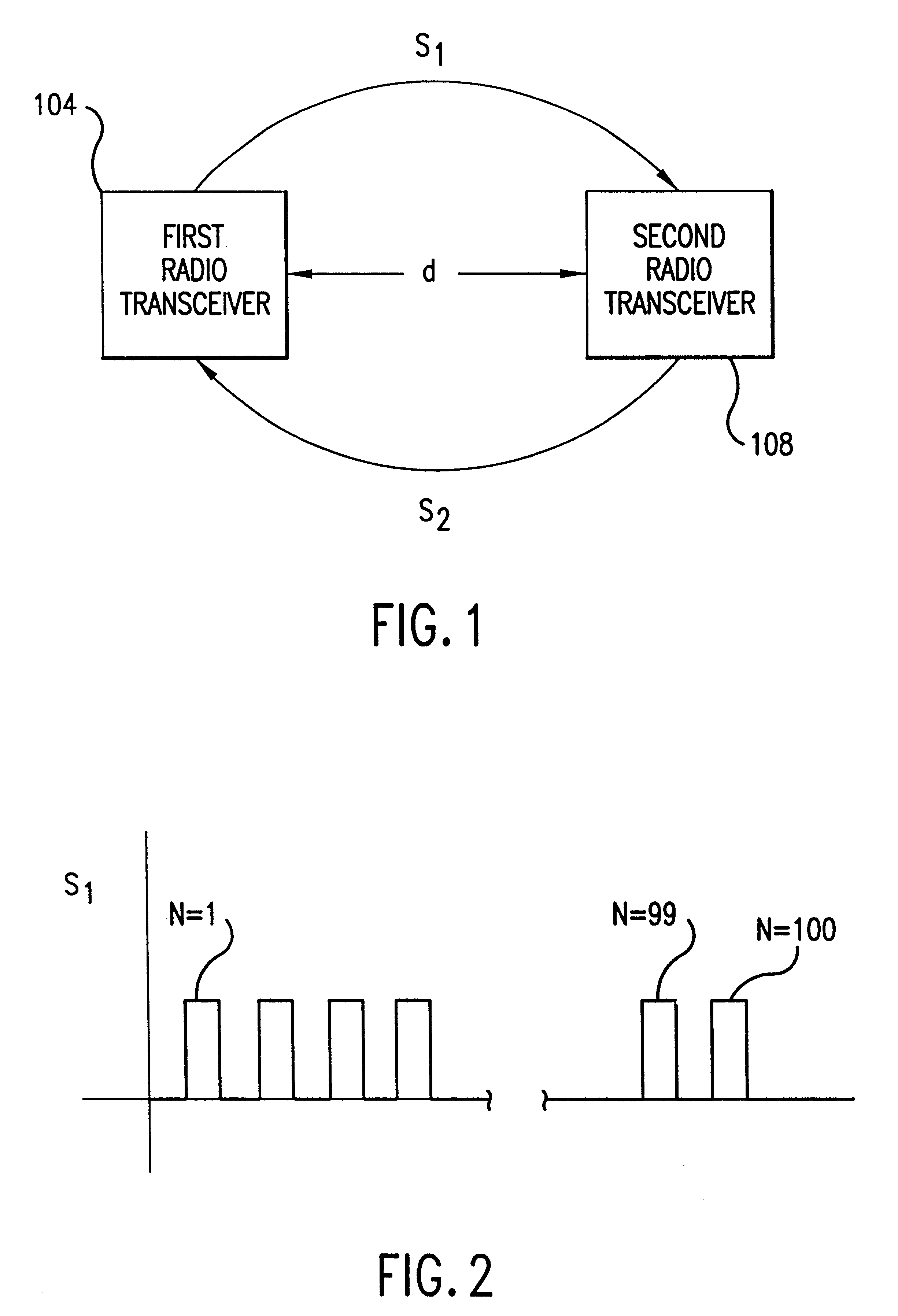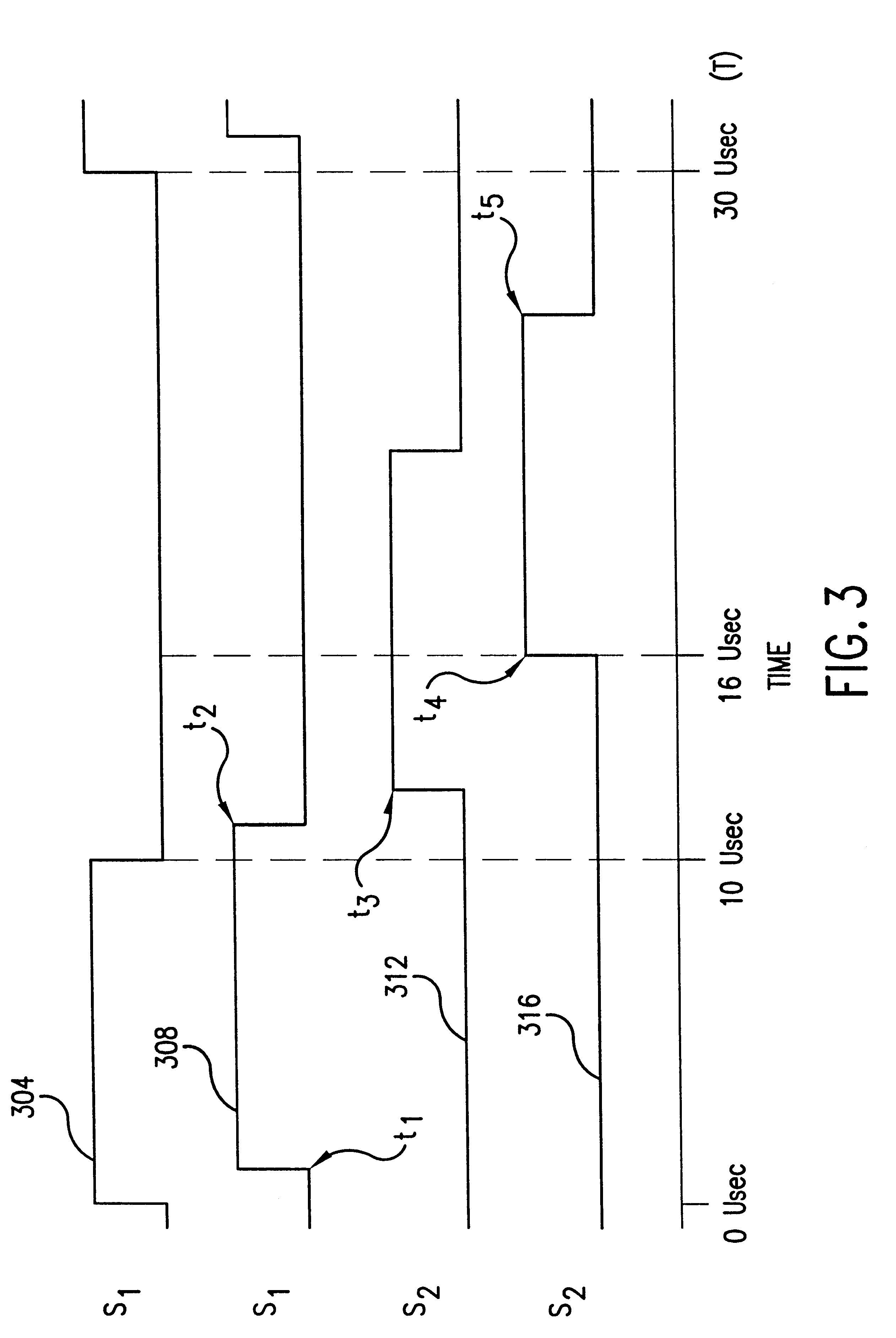System and method for distance measurement by inphase and quadrature signals in a radio system
a radio system and signal technology, applied in the field of distance measurement, can solve the problems of inability to meet the requirements of commercial applications, delay required, and high complexity of the system of determining the position of objects,
- Summary
- Abstract
- Description
- Claims
- Application Information
AI Technical Summary
Problems solved by technology
Method used
Image
Examples
Embodiment Construction
Overview of the Invention
The present invention is directed to a system and a method for distance measurement using a radio system. The present invention can be used to measure the distance between a plurality objects.
Briefly stated, the key to measuring a distance according to the present invention is to precisely measure the time it takes for a single bit to travel from a first radio transceiver to a second radio transceiver. Since in reality it is difficult to transmit and receive a single bit, the distance is measured by determining the time it takes a pulse train to travel from a first radio transceiver to a second radio transceiver and then from the second radio transceiver back to the first radio transceiver. Stated in other terms, the distance is measured by determining the travel time for a complete exchange of data between the first and second radio transceivers.
The actual distance measurement is a two step process. In the first step the distance is measured in coarse resol...
PUM
 Login to View More
Login to View More Abstract
Description
Claims
Application Information
 Login to View More
Login to View More - R&D
- Intellectual Property
- Life Sciences
- Materials
- Tech Scout
- Unparalleled Data Quality
- Higher Quality Content
- 60% Fewer Hallucinations
Browse by: Latest US Patents, China's latest patents, Technical Efficacy Thesaurus, Application Domain, Technology Topic, Popular Technical Reports.
© 2025 PatSnap. All rights reserved.Legal|Privacy policy|Modern Slavery Act Transparency Statement|Sitemap|About US| Contact US: help@patsnap.com



